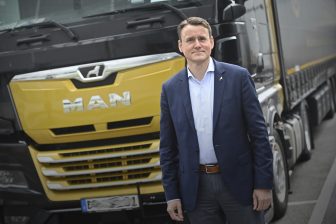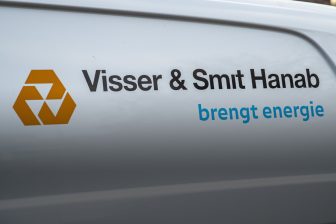UIC Highspeed 2008 world congress: all major players
1300 participants from 44 countries, including 220 speakers and 150 journalists – 90 exhibitors including all major industries from the high speed rail sector at the Trade Exhibition
Advantages of high speed rail for mobility and sustainable development are the central issue (Amsterdam, 18th March 2008). UIC Highspeed 2008, the 6th world congress on high speed rail jointly organised by UIC, NS/HiSpeed (Dutch Railways) and ProRail (Dutch Rail Infrastructure Manager) under the patronage of Mr. Jacques Barrot, Vice President of the European Commission in charge of Transport, was opened on Monday 17th March in Amsterdam in presence of over 1 300 participants from all parts of the world.
The Opening session of UIC Highspeed provided an opportunity to a number of high ranking speakers to present high speed rail development plans in their respective countries. The Speakers were:
Mr. Job Cohen, Mayor of Amsterdam,
Mr. Camiel Eurlings, Minister of Transport, Public Works and Water Management, The Netherlands,
Mr. Karim Ghellab, Minister of Equipment and Transport of Marocco,
Mr. Juliusz Engelhardt, Undersecretary of State, Ministry of Infrastructure of Poland,
Mr. Lu Chunfang, Vice Minister, Ministry of Railways of China,
Mr. Vadim Morozov, First Vice-President of JSC Russian Railways (RZD),
Mr. Jose Serra, Governor of the State of Sao Paulo in Brazil.
Luc Aliadière, UIC Chief Executive, and Highspeed congress co-Chairman, underlined whilst introducing the Opening session, that “high speed rail represents the solution to sustainable mobility needs and symbolises the future of passenger business (…). High speed rail demonstrated its ability to adapt itself to all demographic and geographical conditions, in all parts of the world.
High speed projects developed at regional, national or international level also contribute to bring populations closer with a strong involvement of citizens” Aad Veenman, President Dutch Railways (NS), Chairman of the CER (Community of European Railways and Infrastructure companies) –and congress co-Chairman- said at the Opening session: “I hope and trust Europe is getting more and more mature as regards high speed rail. One of the main challenges is to develop high speed rail transport in Central and Eastern Europe. The initiatives in Poland and the Czech Republic in order to link neighbour capitals (…) are very encouraging in this respect”. Aad Veenman insisted on the high value of high speed rail for sustainable development and on the urgent need to take the rail
advantages into consideration through a genuine policy of internalisation of ‘external’ (environmental) costs of transport.
According to Bert Klerk, Chairman of ProRail, Chairman of EIM (Association of European Rail Infrastructure Managers) –and UIC Highspeed congress co-Chairman- “The railways in the Netherlands are on the move. We are in for a bright future at high speed. A future in which the rail transport mode once again stands for progress, the trains and tracks that link towns and people together. A link moreover that generates investment on and around the railways and makes a significant contribution to sustainable mobility”.. Bert Klerk insisted that “fast trains need fast tracks and that a successful deployment of ERTMS (European Rail Traffic Management System) will play an essential role”.
In his key note speech, Jacques Barrot, Vice Pesident of the European Commission in charge of Transport, welcomed the development of the Trans-European high speed network as a key element of a sustainable mobility policy. Among the main challenges that Europe has to face today are global warming (and the objectives of reduction of CO2 emissions) and the objectives of sustainable development. Jacques Barrot underlined the efforts made by the EU for the funding of the network (through the various EU specific funds), reminding that from 30 priority projects of the Trans-European networks, 22 concern rail links and 7 high speed rail. He also addressed the competition issue resulting from the adoption of European directives (“railway packages”), the necessity to support the European high speed development through a faster implementation of the unified ERTMS traffic management system, and the perspectives of freight transport by high speed rail.
On behalf of the rail industries, André Navarri, UNIFE Chairman, underlined that “the advantages of rail as the most sustainable mode of transport are obvious. However the burdens imposed on the rail sector in terms of taxes and charges paint a different picture: as long as rail passengers have to pay VAT for tickets and rail operators have to pay VAT for energy and even an eco-tax in some countries on electricity, passengers will be encouraged to avoid trains and take other modes instead…In Europe, investments decided as part of EU structural and cohesion funds “open an historic window of opportunity to, with high speed links, contribute to a new cohesion of Europe”. And also: “High speed rail has today become one of the single most important investment strategies for a country to stimulate economic growth, create jobs and contribute to the welfare of citizens whilst at the same time, fighting climate change”.
The UIC Highspeed 2008 congress programme included 3 high level round tables and 26 sessions where 220 speakers are due to present their respective works or experiences. Under the main theme “Fast track to Sustainable mobility”, the 6 main congress topics are: “High Speed Rail and Society”, “High Speed Rail in Practice”, “From Single Lines to a High Speed Network”, “”Strategic Issues in High Speed Rail”, “Meeting Customer Expectations”, “Innovations in Fixed and Mobile Equipments”.
U las zojuist één van de gratis premium artikelen
Onbeperkt lezen? Profiteer nu van de introductieaanbieding voor € 10,- per maand.
Bent u al abonnee?



